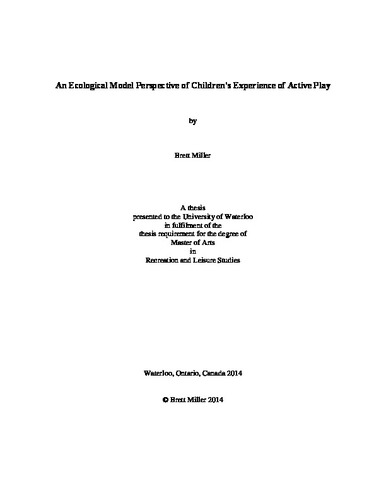| dc.description.abstract | Despite the many known benefits associated with active play, relatively little is known about the influences on and children’s experiences of engagement in active play. The purpose of this study was to investigate the participation in and perceptions of active play by 9 to 12 year old children to uncover the nature of their experiences from their own perspectives. Guided by an ecological model of behaviour, which included intrapersonal, interpersonal, and environmental factors, children’s play behaviours and perceptions were explored using a two phase investigation. In the first phase, an adapted time diary method was used with children 9 to 12 years of age to collect data on when, where, and with whom they are playing. In the second phase, a subgroup of the participants was selected for follow-up, semi-structured interviews to further explore their perceptions of their active play, how they experienced it, and to gain further insights into the intrapersonal, interpersonal, and environmental factors associated with their play. Results of the time diary indicated that children participated in active play episodes most often on weekends, and with family and relatives. Additionally, children most often participated in active play episodes inside their homes or the yards, and each episode most usually lasted less than 30 minutes. Based on the interviews, a number of categories and emergent themes that exemplified children’s active play were revealed. Two aspects transcended the children’s experience of active play: having fun and negotiating negative outcomes. Several categories associated with these themes aligned with the factors defining the ecological model. Intrapersonal factors that affected active play were “feeling emotional range”, “playing to play”, “promoting health”, and “experiencing control”; interpersonal factors included “interacting with others” and “balancing conflict”; and environmental factors included “using space” and “enjoying comfort”. The study concludes with several recommendations for promoting active play among children. | en |

